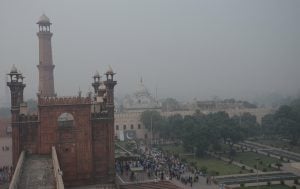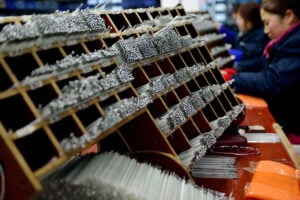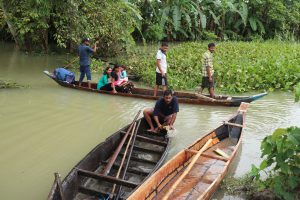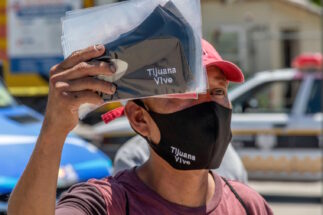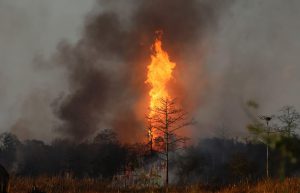“Use more electricity, please,” the Nepal Electricity Authority (NEA), the country’s sole power agency, has been urging citizens since the beginning of the coronavirus-induced lockdown in late March.
This is probably the first time Nepalis have heard such an inviting message. Only a few years ago, the country was reeling under severe power cuts of up to 18 hours a day during the winter.
The frail power system has improved somewhat in the past few years. About 1,000 megawatts (MW) from 50 new power plants was due to be added to the system this year alone – roughly the amount of electricity the country produced in the past century. But this was before the Covid-19 pandemic hit Nepal. “It has now dropped to about 355 MW,” said Prabal Adhikari, a spokesperson at the NEA.
Demand drops
Power demand across the country has dropped to 15 million units per day from 21 million units before the lockdown. “This has resulted in a loss of about 2 billion Nepali rupees (USD 17 million) per month for the electricity authority,” said Adhikari. Since the NEA must pay the power producers even if it fails to sell to consumers, a drop in demand will lead to heavy losses for the authority.
In late March, the NEA informed all power producers that their payments would be delayed, but after their resistance to the move, monthly invoices were paid. “The situation is tough and spillover energy is our biggest worry as more power will be added to the system,” said Kulman Ghising, managing director of the NEA, at a webinar organised by the Independent Power Producers’ Association of Nepal (IPPAN).
Lockdown challenges
Since March, two small power plants with a generation capacity of 8 MW have shut down due to lack of spare parts as supply chains have been disrupted. “It has also become impossible to dispatch technicians due to the lockdown. Many more power plants may shut down soon,” said Surya Prasad Adhikari, executive chairman of Barahi Hydropower.
Problems for the hydropower sector started months before the lockdown. Companies have not been able to bring goods from China since the beginning of the year, when the coronavirus first hit there. “We have requested India to dispatch goods lying in India shipped from China or bought from Indian companies and hope that it will happen soon,” said Pravin Aryal, joint secretary at the Ministry of Energy, Water Resources and Irrigation.
Many operators have not been able to conduct annual maintenance on hydropower projects due to the lockdown. “At least 19 projects in our network have said that they couldn’t conduct maintenance,” added Adhikari from Barahi Hydropower. “In a few days, monsoon clouds will burst, swelling up rivers so there is a slim chance of conducting maintenance in the coming few weeks, putting our systems in threat,” he added.
Big plans and big money troubles
Nepal aims to produce 15,000 MW by 2028, over 10 times its current production of about 1,400 megawatts. This is not the first time the country has announced big targets it will never meet. However, recently things have improved under good leadership in the NEA, with more power plants coming online or under construction.
In the next few years, 131 hydropower projects with generation capacity of 2,490 MW – double the current total generation in the country – will be added to the national grid. However, these projects are likely to be delayed or impacted due to the coronavirus. Most were in final stage of financial closure with banks ready to move to construction. However, with banks receiving fewer deposits and the economy in a downward spiral due to Covid-19, the future looks bleak.
With remittances falling and the services sector (including tourism, travel and restaurants) that contributes about 60% of the country’s GDP completely shut down, banks are worried about financial support that was committed before the pandemic.
“Tourism is not going to bounce back immediately and we don’t know what will happen with our investments there. The only silver lining is the hydropower sector, where we have about 8% of total investments. We will do our best to support this sector,” said Anukul Bhatnagar, vice-chairman of Nepal Bankers’ Association.
Hydropower developers have asked banks to reduce interest rates and urged the government to provide a relief package for the power sector. “As a government entity we will facilitate a process that will have minimum impacts on the investors but we should understand that we need to share the loss. It’s not an issue of profit, it’s all about surviving for now,” said Dilli Bahadur Singh, chairman of the newly formed Electricity Regulatory Commission.
Cases of Covid-19 have risen to over 2,000 in Nepal as of June 3, with the virus starting to climb up into the hills where most of the hydropower projects are. This has worried developers. “Our operations are in close camps in a confined space with common utilities. So, if anyone gets the virus then the whole operation will be affected and we might have to shut down plants too,” said Bikram Ratna Sthapit, CEO of Bhote Koshi Power Company.
Regional market in limbo
Nepal has hoped to boost its economy by selling hydropower for decades. India – its southern neighbour and the most obvious market – lies on the Gangetic plains where rivers slosh south crossing the border into the states of Uttar Pradesh and Bihar.
In 2014, Nepal and India signed their first power trade agreement. In 2016, India made cross-border trade of electricity a strategic issue and declared that only Indian majority-owned companies would be allowed to take part in the trade. Nepal and Bhutan, which also sells hydropower to the Indian market, fought against this. India finally agreed to amend the regulation in 2018.
“Things have been moving in the right direction, we are expecting the regulation from India soon,” said Adhikari, the NEA spokesperson.
But India’s central electricity authority has delayed implementing the regulation that would allow cross-border trade. In a meeting held between two countries last year, the agreement was in its final stage, but officials in Nepal believe it will be delayed again by Covid-19.
Hot competition
The next question is whether Nepal will be able to sell electricity in the competitive Indian market, where energy costs are lower. In March, electricity rates per unit in India fell to about INR 2.49 (USD 0.033) due to low demand caused by the lockdown. The current rate in Nepal is more than INR 5 (USD 0.066) in the wet season, when Nepal has more energy to sell due to the fast-flowing rivers.
However, Nepal is still hoping to get access to the Indian Energy Exchange – India’s power trading platform. “If we get access to the market, we can then bid for the day-ahead market and specify when we could sell electricity. In that case we can sell spillover electricity to India at night or during off-peak hours,” said the NEA’s Adhikari.
There is currently about 7,000 MW worth of electricity projects under construction or in the pipeline about to achieve financial closure. The private sector, which contributes nearly half of the country’s energy supply, is unhappy with the government. The current and pipeline investments from the private sector alone are worth more than NPR 600 billion (USD 4.96 billion), double the total of the banking sector.
Protests
“There are so many problems within our own system, so much uncertainty, and Covid-19 came in between. If the government fails to come up with a solid rescue plan immediately, the whole power sector will collapse in no time,” said Shailendra Guragain, president of IPPAN.
The association is now threatening to take drastic action. “If the authorities turn a deaf ear to our demands, we will stop producing electricity for the national grid and hand over our projects to the government,” Guragain said.
![<p>In the next few years, 131 hydropower projects were scheduled to be built in Nepal; it is likely the coronavirus pandemic will mean many are impacted or delayed [image by ADB]</p>](https://dialogue.earth/content/uploads/2020/06/The-Kali-Gandaki-dam-in-Nepal.jpg)

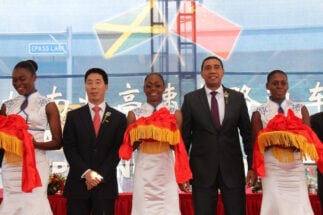
![The Shishper glacier moved forward 2 km in 2018-19 [image by: Karim Dad]](https://dialogue.earth/content/uploads/2020/06/Shishper-glacier-300x225.jpeg)
